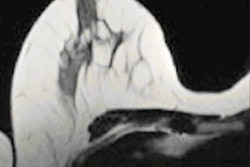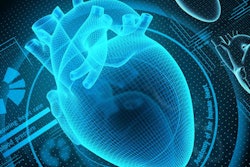
Contrast-enhanced mammography (CEM) and contrast-enhanced MRI (CE-MRI) show comparable performance when it comes to identifying breast cancer, but CE-MRI is more sensitive, a study published on 7 June in Radiology has found.
Yet even if CE-MRI is more sensitive -- particularly in women with dense tissue -- that doesn't mean that it's the best modality to use in every case, wrote a group led by Dr. Nina Pötsch of Medical University of Vienna in Austria. In fact, the study highlights the need for clinicians to keep multiple factors in mind for breast cancer screening.
"The attractiveness of CEM arises mainly from its potential availability," the team noted. "If a modern mammography unit with CEM capability is present, CEM could even be immediately available in the breast unit, avoiding the need for rescheduling patients for CE-MRI of the breast. Our results, however, also suggest that the expected results will provide less diagnostic benefit than CE-MRI."
Mammography is the go-to modality for breast cancer screening, but it has sensitivity limitations in dense tissue. Digital breast tomosynthesis (DBT) and ultrasound are useful adjunct breast screening modalities, but breast MRI -- particularly contrast-enhanced exams -- is the most sensitive imaging tool for women with dense tissue, the authors explained.
The problem is that, compared with mammography, CE-MRI is less available, more expensive, and bothersome for claustrophobic patients. Contrast mammography may be readily available, but it also has disadvantages such as radiation exposure, the need for compression, and use of iodinated contrast agents.
Since direct comparisons between CEM and CE-MRI are lacking, Pötsch and colleagues conducted a literature review to compare the sensitivity, specificity, and negative likelihood ratio of the two techniques (in a negative likelihood ratio measure, values less than one from a negative test indicate that disease is less likely). The review included data from seven studies that investigated 1,137 breast lesions, of which 654 were malignant and 483 were benign.
CE-MRI showed higher sensitivity and a lower negative likelihood ratio, but it had lower specificity than CEM.
| CEM vs. CE-MRI for detecting breast cancer | ||
| Measure | CEM | CE-MRI |
| Sensitivity | 91% | 97% |
| Specificity | 74% | 69% |
| Negative likelihood ratio | 0.12 | 0.04 |
The question of which modality is better for breast cancer screening remains up for debate, according to the authors.
"It is as yet unclear how clinically relevant the diagnostic performance differences are between CEM and CE-MRI," they wrote. "This calls for further, large-scale, and setting-specific prospective research that will also focus on cost-effectiveness."
In an accompanying editorial, Dr. Ritse Mann, PhD, of Radboud University Medical Center and Dr. Wouter Veldhuis, PhD, of University Medical Center Utrecht, both in the Netherlands, noted that the choice between CEM and CE-MRI may come down to women's preferences.
"CEM relies on x-ray technology and is similar in many ways to traditional mammography ... In comparison, MRI does not use ionizing radiation and obviates breast compression. For many women, these factors may determine their preference more than the diagnostic yield of the techniques," Mann and Veldhuis wrote.



















